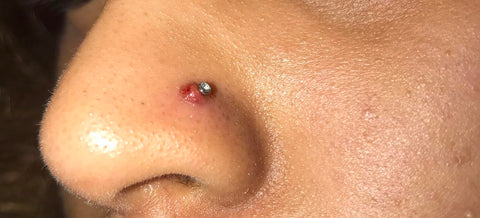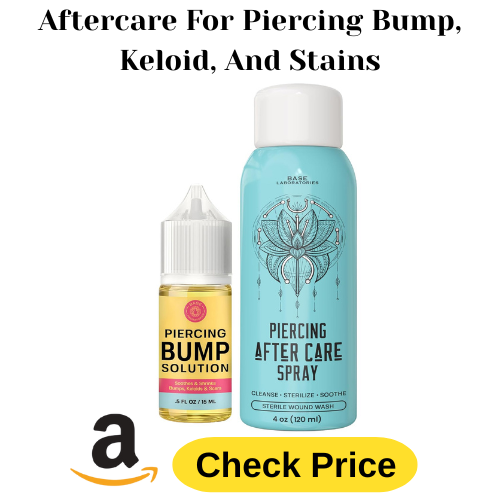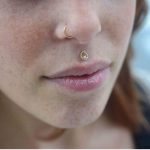Nose piercings are popular. They can look stylish and fun. But sometimes, they can cause problems. One common issue is a keloid. A keloid is a thick, raised scar. It forms when the body heals itself. Some people get keloids more than others. They can be itchy or painful. If you have a keloid on your nose piercing, you might want to remove it. This article will help you learn how to get rid of a keloid safely.
What is a Keloid?
A keloid is a type of scar. It grows bigger than the original wound. Keloids can appear anywhere on the body. But they often show up on ears, shoulders, and the nose. They can be red, brown, or darker than the skin. Sometimes, they grow slowly. Other times, they grow quickly.
Easy And Fast Solutions To Get Rid of Keloid on Nose Piercing
Why Do Keloids Form?
Keloids form when the body heals. This healing process can create extra skin cells. Some people are more likely to get keloids. This can be due to:
- Genetics: If someone in your family has keloids, you might get them too.
- Skin Type: People with darker skin may be more prone to keloids.
- Wound Size: Larger wounds can lead to keloids.
Signs of Keloids
How do you know if you have a keloid? Look for these signs:
- Raised area on the skin.
- Color different from your skin.
- Itchy or painful feeling.
If you notice these signs, it may be a keloid.

Credit: www.youtube.com
How to Treat Keloids
Getting rid of keloids can take time. Here are some ways to treat them:
1. Keep The Area Clean
First, keep the keloid clean. Use mild soap and water. Gently wash the area. Do this every day. Keeping it clean helps prevent infection.
2. Avoid Irritation
Do not touch or scratch the keloid. This can make it worse. Avoid tight clothing and jewelry that rub against it.
3. Use Silicone Gel Sheets
Silicone gel sheets can help reduce keloids. They keep the area moist. Use them as directed. You can find them at drugstores.
4. Apply Corticosteroid Creams
Corticosteroid creams can reduce inflammation. Apply the cream to the keloid. Follow the instructions on the label. Use it regularly for best results.
5. Consult A Doctor
If home treatments do not work, see a doctor. They can offer other treatments:
- Injections: Doctors can inject medicine into the keloid.
- Surgery: They can remove the keloid.
- Laser Therapy: This can help flatten the keloid.
Preventing Keloids
It is not always possible to prevent keloids. But you can take steps to reduce the risk:
- Choose a professional piercer.
- Follow aftercare instructions carefully.
- Do not remove jewelry too soon.
When to Seek Help
If your keloid grows or changes, see a doctor. If it becomes very painful, that is a sign to get help. Do not ignore signs of infection, like pus or fever.
Living with Keloids
Living with keloids can be hard. They can affect your self-esteem. Some people may feel shy about their appearance. Remember, you are not alone. Many people have keloids. Talk to friends or family for support. You can also find online groups. These can help you connect with others.
Final Thoughts
Keloids can be frustrating. But there are ways to treat them. Keeping the area clean is very important. You can try silicone sheets and creams. If these do not work, visit a doctor. They can provide other treatments. Remember to take care of your skin. With the right steps, you can manage keloids effectively.
Resources for Further Reading
If you want to learn more, check these resources:
- American Academy of Dermatology
- National Institutes of Health
- WebMD: Keloids

Credit: www.managementgeneral.ro
Frequently Asked Questions
Can Keloids Go Away On Their Own?
Sometimes, keloids can shrink or fade. But they may not disappear completely.
Are Keloids Harmful?
Keloids are not harmful to your health. But they can be bothersome.
Can I Remove A Keloid At Home?
It is best to see a doctor. They can help you safely remove a keloid.
How Long Does Treatment Take?
It varies. Some treatments take weeks, while others may take months.
Will A Keloid Come Back After Treatment?
Sometimes, keloids can return after treatment. Follow your doctor’s advice to reduce this risk.
Frequently Asked Questions
What Causes Keloids On Nose Piercings?
Keloids form from excess collagen after skin injury. Nose piercings can trigger this response.
How Can I Prevent Keloids After Piercing?
Keep the area clean. Avoid touching it often. Use gentle, non-irritating products.
Can Keloids Be Removed At Home?
Home removal methods are not safe. Professional treatment is recommended for best results.
What Are The Treatment Options For Keloids?
Options include corticosteroid injections, silicone sheets, and laser therapy. Consult a doctor for advice.
Conclusion
Getting rid of a keloid on a nose piercing can be challenging. It is important to stay informed. Take care of your skin. If you have concerns, always seek help from a professional. With the right approach, you can manage keloids effectively.




